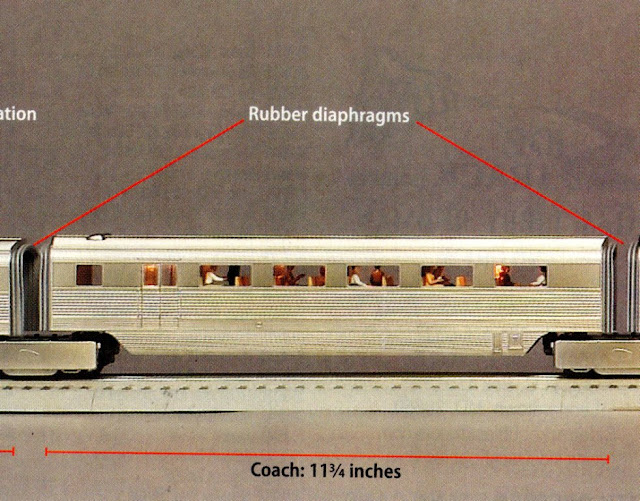Above: The Flying Yankee, built with New Deal funding, 1934-1935. Its total cost was $275,000 (about $5.8 million in 2021 dollars). According to flyingyankee.com, the Flying Yankee Train was in service from 1935 to 1957. Photo by Harris & Ewing, provided courtesy of the Library of Congress Prints & Photographs Division.

Above: A view of the Flying Yankee, from the back "Observation Lounge" to the front. The description for this photograph reads, "The Flying Yankee, one of New England's crack streamliners. PWA funds financed the purchase of this train." In the 1939 report, America Builds: The Record of PWA, it's noted that "On many another railroad, the Diesel-powered, lightweight streamlined trains, such as the Rebel of the Gulf, Mobile & Northern Railroad in the South, and the Flying Yankee in New England, that daily flash thousands of people from city to city, are the results of PWA loans" (p. 189). Photo courtesy of the National Archives.

Above: From the Spring Lake Gazette (Spring Lake, New Jersey), February 21, 1935, p. 2. The author of the article, Lattimer Shaw, wrote: "the new silvery flyer easily and safely has attained a speed of more than 100 miles an hour... the 'Yankee's' 35 cents a mile forecasting enormous savings over the 65 to 80 cents a mile for steam train operation... The 'Flying Yankee' is proclaimed by railroad experts and automotive men as a forerunner of great fleets of similar trains which are expected to appear in the next few years to change completely the already romantic picture of American railroading and, in fact, human transportation itself." Unknown photographer, provided courtesy of newspapers.com, and used here for educational and non-commercial purposes.
Above: This is a photo from Classic Toy Trains magazine, May 2009, p. 77. In the article reviewing this MTH Electric Trains set, author Bob Keller writes: "Passenger train patronage declined sharply during the Great Depression, but a few forward-thinking railroads had the vision to try revolutionary ways to boost ridership... Though the Yankee's seating was limited, it proved to be a smash hit..." (p. 76). Image above scanned from a personal copy, and used here for educational and non-commercial purposes.

Above: The coach section of the MTH Flying Yankee model train set. Keller writes on the actual PWA-funded Flying Yankee train, "the experimental streamliners were constructed of stainless steel and were much lighter than a conventional train. The silver color suggested something ultra-modern, such as commercial airliners. Creature comforts were high on the agenda, with air-conditioned cars and a quieter traveling experience through cork insulation, indirect lighting, and better cushioned seats" (see previously cited Classic Toy Trains magazine). Image above scanned from a personal copy, and used here for educational and non-commercial purposes.

Above: The box of a Flying Yankee wind-up toy. On another side of the box, we learn: "When the silver train arrived in Boston in 1935, large crowds gathered to see the latest in technology. Built for the Boston & Maine and Maine Central Railroads, the Flying Yankee brought excitement and optimism to a region still in the grips of the Great Depression until it was retired in 1957. Now owned by the State of New Hampshire, the Flying Yankee is being restored. When complete, it will be the only train of this type to ever operate again. For more information, visit www.flyingyankee.com. This is a very special train to collectors and its smooth shiny shape appeals to everyone. Chrome plated." Photo by Brent McKee.
Above: A 2021 video by Keith Totten, showing an older Lionel Flying Yankee train set in action. YouTube link: https://www.youtube.com/watch?v=q_jajuL3QiA.
Above: A 2009 video highlighting the history and recollections of the Flying Yankee, as well as modern restoration efforts. Today, the Flying Yankee is located at the Hobo Railroad in Lincoln, New Hampshire, but restoration efforts seem to have stalled, probably due to a lack of funding. YouTube link: https://www.youtube.com/watch?v=muH7bSf5lo8.




No comments:
Post a Comment